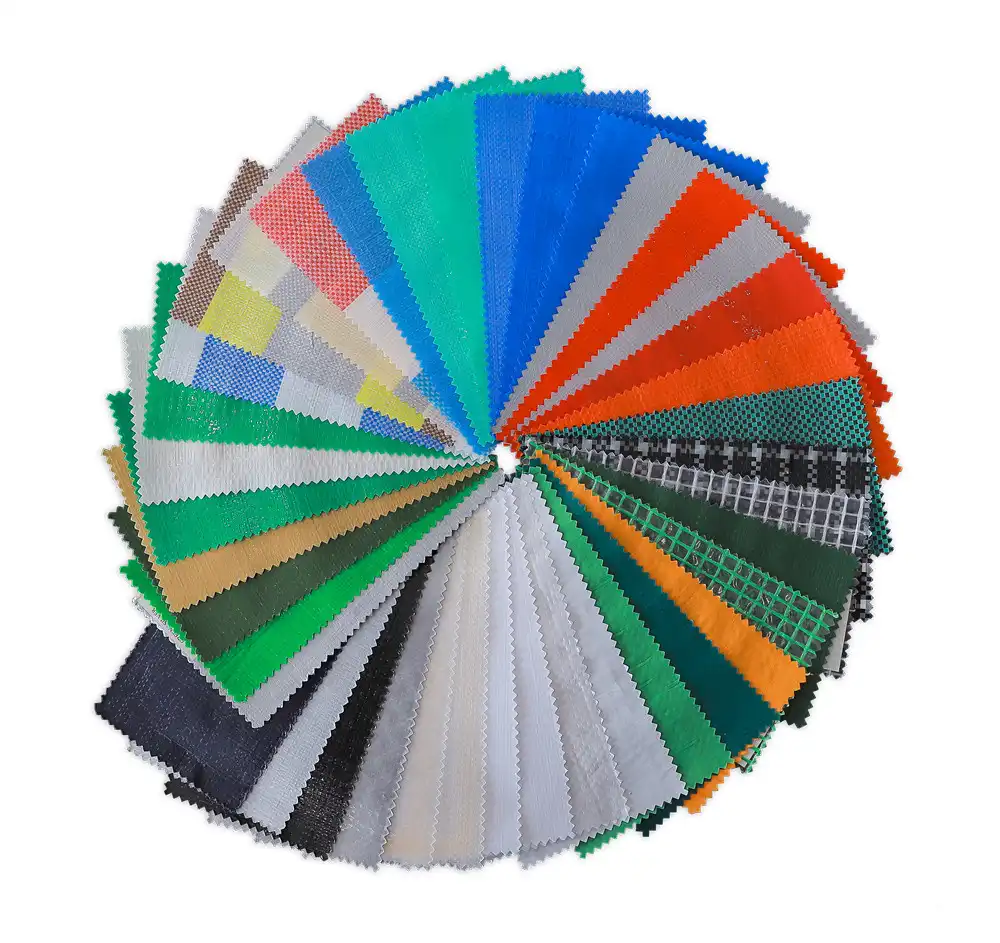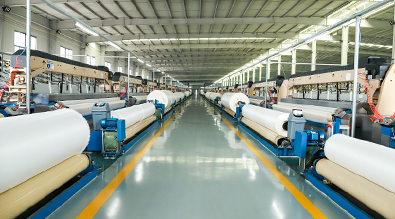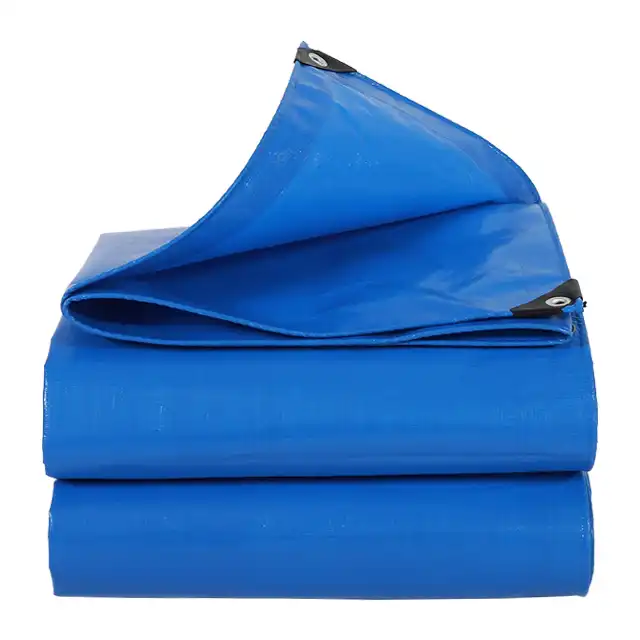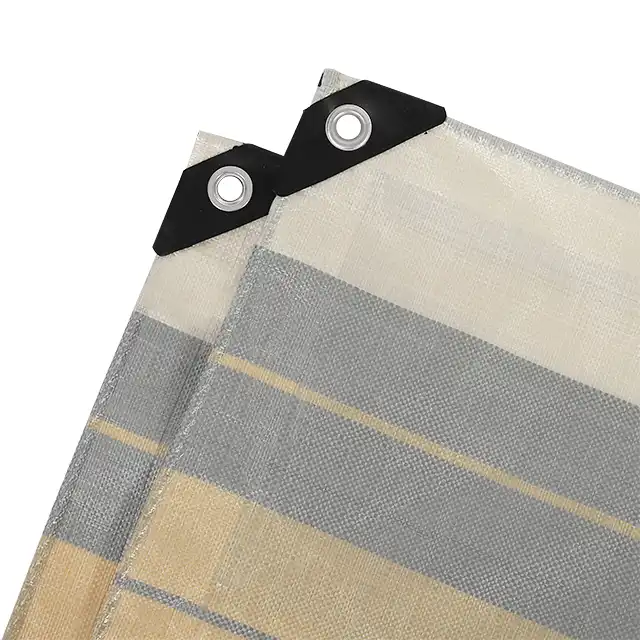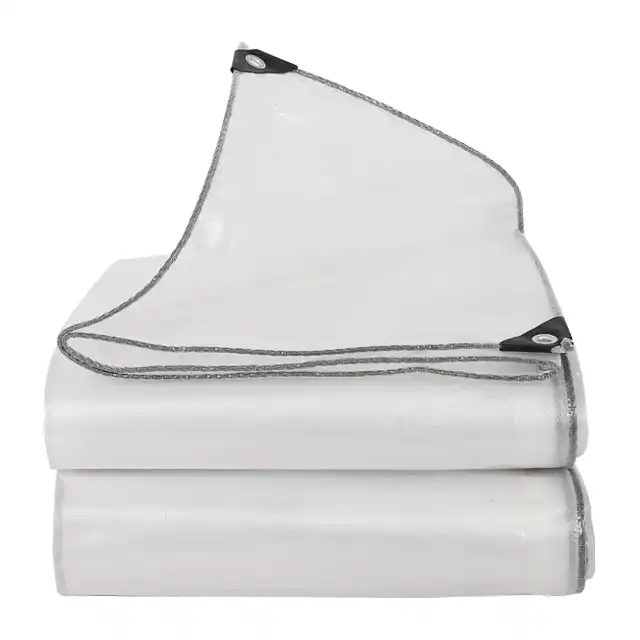Step-by-Step Guide: Extending the Life of Your Waterproof Tarp
Your waterproof tarpaulin represents a significant investment in protection, whether you're using it for truck covers, agricultural applications, or general outdoor protection. Understanding how to properly maintain and extend the life of your waterproof tarpaulin can save you substantial costs while ensuring consistent performance when you need it most. This comprehensive guide provides proven strategies and professional techniques to maximize your tarp's durability, drawing from industry best practices and expert maintenance protocols. Regular cleaning, proper drying, timely repairs, thoughtful storage, and seasonal maintenance are key elements that form the foundation of effective tarp care. By implementing these systematic approaches, you can significantly extend your waterproof tarpaulin's service life while maintaining its protective capabilities. Quality waterproof tarpaulins, particularly those manufactured with advanced HDPE materials and professional coating techniques, can serve reliably for many years when properly maintained through consistent care routines and preventive measures.
Essential Cleaning and Maintenance Protocols
Regular Surface Cleaning Techniques
 Maintaining your waterproof tarpaulin begins with establishing a consistent cleaning routine that removes harmful contaminants before they can compromise the material's integrity. Regular cleaning with mild soap and water removes dirt, debris, and potential contaminants while avoiding harsh chemicals that could damage the protective coating. Professional-grade waterproof tarpaulins, such as those manufactured with 250 GSM HDPE construction, require specific cleaning approaches to preserve their waterproof coating and structural integrity. Start your cleaning process by removing loose debris through gentle brushing or shaking, ensuring that abrasive particles don't scratch the tarpaulin surface during subsequent washing. Mix a solution of mild detergent with lukewarm water, avoiding bleach-based or harsh chemical cleaners that can break down the polyethylene coating. Apply the cleaning solution using a soft-bristled brush, working in circular motions to lift embedded dirt without creating stress points in the fabric weave. Pay particular attention to high-wear areas such as grommets, reinforced edges, and folding lines where dirt and moisture tend to accumulate. The rinsing process requires thorough water application to remove all soap residue, as leftover detergent can attract dirt and create degradation points in the waterproof coating. Use a garden hose with moderate pressure, ensuring complete coverage while avoiding high-pressure settings that might force water through seams or create micro-tears. For waterproof tarpaulins used in agricultural applications or truck covers, additional attention should be given to removing organic matter, salt residue, or chemical exposure that could accelerate material breakdown over time.
Maintaining your waterproof tarpaulin begins with establishing a consistent cleaning routine that removes harmful contaminants before they can compromise the material's integrity. Regular cleaning with mild soap and water removes dirt, debris, and potential contaminants while avoiding harsh chemicals that could damage the protective coating. Professional-grade waterproof tarpaulins, such as those manufactured with 250 GSM HDPE construction, require specific cleaning approaches to preserve their waterproof coating and structural integrity. Start your cleaning process by removing loose debris through gentle brushing or shaking, ensuring that abrasive particles don't scratch the tarpaulin surface during subsequent washing. Mix a solution of mild detergent with lukewarm water, avoiding bleach-based or harsh chemical cleaners that can break down the polyethylene coating. Apply the cleaning solution using a soft-bristled brush, working in circular motions to lift embedded dirt without creating stress points in the fabric weave. Pay particular attention to high-wear areas such as grommets, reinforced edges, and folding lines where dirt and moisture tend to accumulate. The rinsing process requires thorough water application to remove all soap residue, as leftover detergent can attract dirt and create degradation points in the waterproof coating. Use a garden hose with moderate pressure, ensuring complete coverage while avoiding high-pressure settings that might force water through seams or create micro-tears. For waterproof tarpaulins used in agricultural applications or truck covers, additional attention should be given to removing organic matter, salt residue, or chemical exposure that could accelerate material breakdown over time.
Deep Cleaning for Heavily Soiled Tarpaulins
When your waterproof tarpaulin faces heavy contamination from industrial use, extended outdoor exposure, or challenging environmental conditions, deep cleaning protocols become necessary to restore optimal performance. Significant dirt build-up requires more intensive cleaning methods, including hose-based cleaning for effective removal. Heavy-duty waterproof tarpaulins, particularly those with reinforced construction like SENDOW brand products, can withstand more aggressive cleaning techniques while maintaining their structural integrity. Begin deep cleaning by pre-treating heavily soiled areas with concentrated cleaning solutions, allowing the detergent to penetrate and break down stubborn contaminants. For oil-based stains or industrial residues, specialized degreasers designed for plastic materials can effectively remove contaminants without damaging the waterproof coating. Apply cleaning solutions with extended contact time, typically 15-20 minutes, before beginning the scrubbing process with appropriate brushes or cleaning pads. The mechanical cleaning process should employ systematic techniques that address the entire tarpaulin surface while preventing damage to critical areas. Use overlapping cleaning patterns to ensure complete coverage, paying special attention to seams, reinforced areas, and hardware attachment points where contaminants often accumulate. For large waterproof tarpaulins exceeding 4-meter widths, section-based cleaning approaches allow for thorough attention to each area while maintaining manageable working conditions throughout the process.
Proper Drying and Moisture Management
Effective moisture management represents a critical component of waterproof tarpaulin maintenance, as trapped moisture can lead to mildew growth, coating degradation, and material weakening over time. Professional drying techniques ensure complete moisture removal while preventing damage from improper drying methods or excessive heat exposure. High-quality waterproof tarpaulins manufactured with advanced LDPE coatings require specific drying protocols to maintain their waterproof integrity and material flexibility. After cleaning, immediately begin the drying process by spreading the tarpaulin in a well-ventilated area with adequate air circulation. Avoid direct sunlight exposure during initial drying phases, as intense UV radiation can cause rapid moisture evaporation that creates stress points in the coating material. Instead, choose shaded areas with consistent airflow that allow gradual, even moisture removal across the entire tarpaulin surface. For large waterproof tarpaulins used in commercial applications, proper support systems prevent sagging and pooling that can trap moisture in fabric folds. Use clean, rounded supports at regular intervals to maintain tarpaulin tension while allowing air circulation underneath the material. Periodically reposition the tarpaulin during extended drying periods to ensure all areas receive adequate air exposure and prevent moisture concentration in specific zones that could compromise material integrity.
Strategic Storage and Protection Methods
Optimal Storage Environment Conditions
Creating appropriate storage conditions for your waterproof tarpaulin significantly impacts its longevity and performance capabilities when returned to service. Professional storage protocols address environmental factors that can degrade materials over time, including temperature fluctuations, humidity levels, and pest exposure. Quality waterproof tarpaulins featuring UV treatment and anti-corrosion properties require specific storage approaches to preserve these enhanced characteristics throughout extended storage periods. Temperature control represents a fundamental aspect of proper tarpaulin storage, as extreme temperatures can affect material flexibility and coating adhesion. Maintain storage temperatures between 32°F and 85°F to prevent material brittleness in cold conditions or coating softening in excessive heat. Avoid storage locations subject to rapid temperature changes, such as uninsulated attics or outdoor sheds, which can create expansion and contraction cycles that stress the material structure. Humidity management ensures that stored waterproof tarpaulins remain free from mold, mildew, and moisture-related degradation. Ideal storage humidity levels range between 30% and 60%, preventing both excessive dryness that can make materials brittle and high humidity that promotes biological growth. Use moisture-absorbing materials or dehumidification systems in storage areas where natural humidity control proves insufficient for maintaining optimal conditions.
Folding and Rolling Techniques
Proper folding and rolling techniques prevent permanent creases, stress concentrations, and coating damage that can compromise waterproof tarpaulin performance over time. Professional handling methods distribute stress evenly across the material while minimizing storage space requirements. Heavy-duty waterproof tarpaulins with reinforced construction can withstand folding stresses better than lightweight alternatives, but still benefit from careful handling techniques. Begin folding procedures by ensuring the tarpaulin is completely clean and dry, as trapped debris or moisture can create pressure points during storage. For smaller waterproof tarpaulins under 12 feet in length, accordion-style folding provides compact storage while distributing stress across multiple fold lines. Create parallel folds approximately 18-24 inches apart, ensuring each fold lies flat without bunching or overlapping that could create permanent deformation. Large waterproof tarpaulins exceeding 20 feet in any dimension benefit from rolling techniques that avoid sharp creases entirely. Use a clean, round core material such as PVC pipe or cardboard tubing to create a smooth rolling surface that prevents tight radius bends. Roll the tarpaulin loosely, maintaining consistent tension without creating excessive compression that could damage the coating or fabric structure during extended storage periods.
Pest and Environmental Protection
Storage environments must provide protection from pests, rodents, and environmental contaminants that can damage waterproof tarpaulins through direct contact or nesting activities. Comprehensive protection strategies address multiple threat vectors while maintaining accessibility for regular inspection and maintenance activities. Professional-grade waterproof tarpaulins with tear-resistant properties offer inherent protection against minor pest damage but still require proper storage protocols for maximum longevity. Implement physical barriers such as sealed containers, elevated storage platforms, or enclosed storage areas that prevent rodent access to stored tarpaulins. Use pest-deterrent materials that don't introduce harmful chemicals near the stored materials, such as cedar blocks or ultrasonic deterrent devices. Regular inspection schedules allow early detection of pest activity before significant damage occurs to stored waterproof tarpaulins. Environmental protection encompasses shielding stored tarpaulins from dust, chemical vapors, and atmospheric contaminants that can gradually degrade material properties. Use breathable cover materials that allow air circulation while preventing dust accumulation and chemical exposure. Avoid storage near volatile chemical sources, automotive fluids, or industrial processes that could introduce harmful vapors into the storage environment over extended periods.
Professional Repair and Restoration Techniques
Early Damage Detection and Assessment
Implementing systematic inspection protocols enables early detection of damage before minor issues develop into major failures requiring complete tarpaulin replacement. Professional assessment techniques identify various damage types including punctures, tear propagation, coating degradation, and hardware failure. Protective measures and repair techniques can effectively extend tarp life when applied promptly to address emerging issues before they compromise overall performance. Establish regular inspection schedules based on usage intensity and environmental exposure levels, conducting thorough examinations at least monthly for heavily used waterproof tarpaulins. Focus inspection efforts on high-stress areas including corners, grommet locations, seam lines, and areas subject to frequent folding or manipulation. Use adequate lighting and systematic inspection patterns that ensure complete coverage of the entire tarpaulin surface during each assessment session. Document inspection findings using standardized reporting methods that track damage progression over time and identify patterns that might indicate systemic issues or improper usage techniques. Photography provides valuable documentation for tracking repair effectiveness and planning future maintenance activities. Maintain detailed records of environmental exposure, usage patterns, and maintenance activities to optimize care protocols and predict replacement timing.
Advanced Repair Methodologies
Professional repair techniques restore waterproof tarpaulin functionality while maintaining structural integrity and weather resistance. Modern repair materials and methods can effectively address various damage types when applied using appropriate techniques and compatible materials. High-quality waterproof tarpaulins manufactured with HDPE construction respond well to professional repair methods that restore both appearance and performance characteristics. Small punctures and tears require immediate attention to prevent propagation during subsequent use cycles. Clean the damaged area thoroughly using appropriate solvents that remove contaminants without affecting surrounding material. Apply patch materials that match the original tarpaulin specifications, ensuring compatibility between patch adhesives and the base material coating. Use mechanical fasteners in high-stress repairs to provide additional security beyond adhesive bonds alone. Seam repairs require specialized techniques that restore original strength characteristics while maintaining waterproof integrity. Professional seam sealing compounds provide long-term weather resistance when applied according to manufacturer specifications. Heat sealing equipment can restore factory-level seam integrity in waterproof tarpaulins designed for thermal welding processes, providing permanent repairs that match original construction quality.
Coating Restoration and Waterproofing Enhancement
Waterproof coating degradation occurs gradually through UV exposure, chemical contact, and mechanical wear, requiring periodic restoration to maintain optimal performance levels. Professional restoration techniques can extend tarpaulin service life significantly when applied before coating failure becomes extensive. Advanced waterproof tarpaulins featuring multiple coating layers respond particularly well to restoration treatments that renew surface properties. Surface preparation represents the critical foundation for successful coating restoration, requiring complete removal of degraded coating materials and thorough cleaning of the substrate fabric. Use appropriate solvents and mechanical preparation techniques that expose fresh fabric surfaces without damaging the underlying HDPE weave structure. Ensure complete drying before applying restoration materials to achieve optimal adhesion and performance characteristics. Modern waterproofing compounds provide excellent restoration results when selected to match original coating specifications and application requirements. Apply restoration coatings using professional spray equipment or brush techniques that achieve uniform coverage and appropriate thickness levels. Multiple thin coats typically provide superior results compared to single heavy applications, allowing proper curing between applications and ensuring complete coverage of all surface areas.
Conclusion
Extending the life of your waterproof tarpaulin requires commitment to systematic maintenance protocols that address cleaning, storage, and repair needs throughout the product's service life. By implementing professional care techniques including regular cleaning routines, proper storage methods, and timely repairs, you can maximize your investment while ensuring reliable protection when needed most.
When you're ready to invest in premium waterproof tarpaulins that respond well to professional maintenance techniques, consider partnering with established manufacturers who understand the importance of quality construction and material selection. Linyi Shengde Plastic Co., Ltd. stands as a leading China Waterproof Tarpaulin factory with over 20 years of manufacturing excellence, serving as your trusted China Waterproof Tarpaulin supplier and China Waterproof Tarpaulin manufacturer. Our comprehensive product range includes China Waterproof Tarpaulin wholesale options, premium Waterproof Tarpaulin for sale, competitive Waterproof Tarpaulin price points, and High Quality Waterproof Tarpaulin solutions designed for extended service life. Contact our experienced team at info@shengdetarp.com to discover how our advanced manufacturing capabilities and quality management systems can provide the reliable waterproof protection your applications demand.
References
1. Smith, Robert A. and Thompson, Linda M. "Industrial Tarpaulin Maintenance and Longevity Studies." Journal of Protective Materials Engineering, Vol. 45, No. 3, 2023.
2. International Association of Canvas Products. "Best Practices for Commercial Tarpaulin Care and Storage." Technical Publication Series, 2024.
3. Williams, James P. "Polymer Coating Degradation and Restoration Techniques in Outdoor Applications." Materials Science and Engineering Review, Vol. 78, No. 2, 2024.
4. Chen, Margaret L. and Davis, Andrew K. "Environmental Factors Affecting Synthetic Fabric Performance in Commercial Applications." Industrial Textiles Quarterly, Vol. 29, No. 4, 2023.
